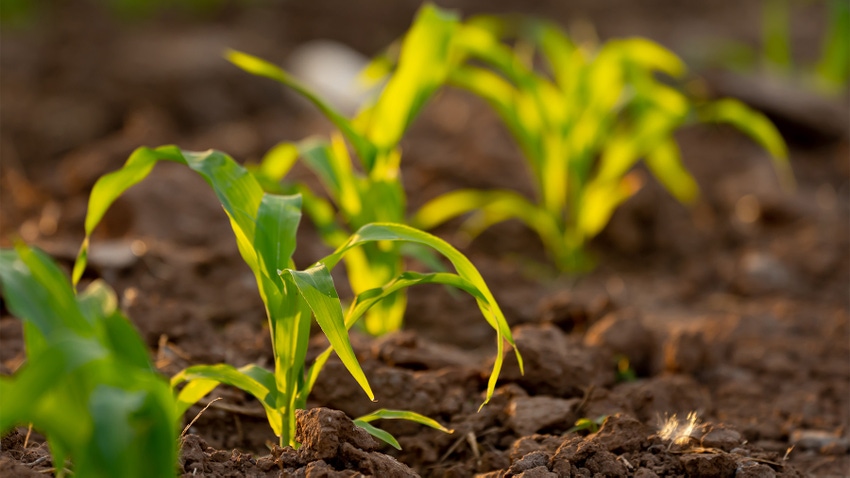
For North Carolina corn farmers seeking secrets to achieve maximum yields in 2024, Ron Heiniger is offering just one hint this year: choose the right hybrid and plant it on the right day.
“We have seen this gain in genetics that allows us to at least have some hope of making respectable and profitable yields. The challenge for you is to use those genetics correctly, to put them in the right place at the right time,” Heiniger, North Carolina State University Extension corn specialist said at an Extension meeting at the Bertie County Extension Center in Windsor Feb. 19.
Heiniger said the key is choosing the right hybrid with the right maturity date, whether early, medium, or late, so that hybrid will have the water it needs at silking time. He said you need to target your hybrids to how sandy or loamy your soil is and how much water your corn may receive during the season.
“You know when your rainfall patterns tend to be, so you can make some choices on when ‘should I plant these hybrids to get the best result. If I got irrigation, and I could supply water to these hybrids, they’re capable of tremendous yields,’” Heiniger said.

North Carolina State University Extension Corn Specialist Ron Heiniger fields questions at an Extension corn meeting Feb. 19 at the Bertie County Extension Center in Windsor. (Photo by John Hart)
Heiniger said the most important job is to make sure you get your hybrids off to a good start by choosing good days to plant your corn, use starter fertilizer, and apply micronutrients..
“What you are trying to achieve is a positive feedback loop, and what that means when that little seed germinates, and that root comes out of that seed, the first thing it finds is nutrients, nitrogen, phosphorus, a little boron, maybe some zinc, magnesium. It finds nutrients. It takes those nutrients in. Cell division occurs. Those roots grow rapidly, to find more nutrients; the plant takes that up and grows even more rapidly,” Heiniger said.
Heiniger said the biggest tool in your toolbox is to make sure you have plenty of nitrogen in your corn crop at planting time. He recommends applying one-third of your nitrogen at planting time. If you’re applying 150 units of nitrogen per acre, Heiniger recommends applying 50 units at planting.
“Why do I put so much nitrogen at planting time? Nitrogen comes through the root by diffusion, not by ion exchange. Diffusion occurs when you get more on the outside than you have on the inside, and that draws what’s outside into the plant. If you don’t have enough concentrated nitrates in that soil, that plant has a hard time pulling it through the root system. I want to make sure I have plenty of nitrates concentrated in that early root zone,” he said.
Remember that micronutrients are vital for a successful corn crop.
For example, Heiniger noted that the phosphorous index in many North Carolina corn fields is very high due to the use of broiler or hog litter in many fertility programs. The problem is a corn plant can’t utilize phosphorus unless the root is supplied with some zinc.
For the corn plant to utilize phosphorus, 30 units of phosphorus must be matched with one unit of zinc. If your soil holds lots of phosphorus, Heiniger said there must be enough zinc applied to meet that 30 to 1 ratio.
In addition, Heiniger noted there is plenty of magnesium in most North Carolina soils, the challenge is most of this magnesium is below the root zone and a corn plant must grow into that magnesium. He said applying some magnesium at planting makes a big difference in some of these soils.
Another key micronutrient for corn is boron.
“Boron is critical to root tip development. It stimulates cell division at the root tip. Our soils tend to be marginal or low on boron. Boron is soluble; it moves in the soil,” Heiniger said.
Finally, Heiniger encourages North Carolina farmers to visit the Corn Climate dashboard to determine their best corn planting dates. The dashboard provides climate-based information on seasonal corn development. It utilizes multiple climate and weather datasets to calculate daily heat units (growing degree days) and aggregates them over the season to predict when different developmental stages will occur.
About the Author(s)
You May Also Like






